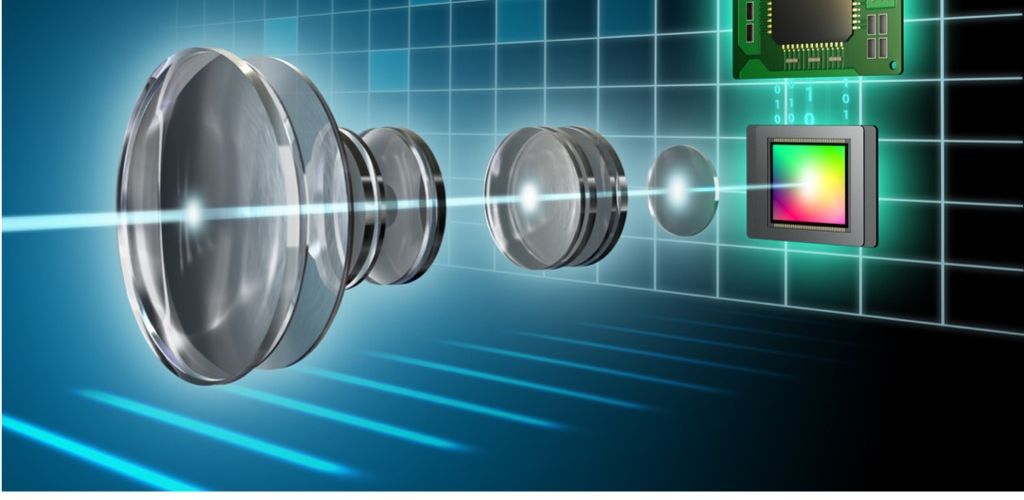Computational Imaging
Computational Imaging jointly designs optics and algorithms. This field of research is inherently interdisciplinary, combining expertise in imaging science, optical engineering, signal processing and machine learning. Computational imaging can overcome physical limitations and achieve novel capabilities, from advancing experimental observation techniques used in biology, to highly novel imaging system methods to atomic force microscopy. Computational Imaging serves a broad range of scientific, defense and security, biomedical, and neuroscience applications.
Can Technology Eliminate Blind Spots?
New digital-camera-based system shows it’s possible to “see” around corners What if your car possessed technology that warned you not only about objects in clear view of your vehicle—the way that cameras, radar, and laser can do now in many standard and autonomous vehicles—but also warned you about objects hidden by obstructions. Maybe it’s something […]
Convergence: RAISE Integrating machine learning and biological neural networks
The field of neuroscience is undergoing a rapid transformation, and within the next decade, it may become possible to capture data from millions of individual neurons at the same time. Such a technological advancement would allow scientists to record and analyze a significant fraction of the brain’s neural network at unprecedented spatial and time resolutions. […]
CIF: Small: Sequential and Compound Estimation for Computational Imaging Systems
The widespread use of imaging technologies across biology, chemistry, material science, medicine, and other fields is motivated by the great innate human ability for visual information processing. Imaging is often limited, however, by the damage to a sample caused by the imaging process, such as sputtering due to the incident ion or electron beam in […]
CIF: Small: Collaborative Research: Signal Processing for Nonlinear Diffractive Imaging: Acquisition, Reconstruction, and Applications
There is a growing need in biomedical research to observe biological structure and processes on the length scales smaller than 100nm. Conventional optical systems cannot effectively provide such information, however, due to the infamous diffraction limit. The formulation of the diffraction limit fundamentally relies on the presumed linearity in the interaction between the illuminating light […]
Angle-Sensitive Metasurfaces for Lens-Free Compound-Eye Cameras
This project aims at developing a new camera technology featuring extreme size miniaturization, inspired by the compound-eye vision modality that is commonly found in nature in small invertebrates such as insects and crustaceans. Compound eyes typically consist of a curved array of many imaging elements (including lenses and photoreceptors), each oriented so as to detect […]
A Point of Light
Vivek Goyal Creates Images from Single Photons When you take a photo on a cloudy day with your average digital camera, the sensor detects trillions of photons. Photons, the elementary particles of light, strike different parts of the sensor in different quantities to form an image, with the standard four-by-six-inch photo boasting 1,200-by-1,800 pixels. Anyone […]
EAGER: Design and Exploration of Optical Nanoantenna Technology for Advanced IC Testing and Hardware Security
Non-technical: Today’s integrated circuit (IC) chips are used in practically all consumer electronics, as well as in critical defense technologies and municipal support systems such as power and water supply services. To build these chips, state-of-the-art technologies are used that integrate billions of transistors on a single chip. Currently, we do not have the technological […]
CNS:CSR Collaborative Research: Leveraging Intra-chip/Inter-chip Silicon-Photonic Networks for Designing Next-Generation Accelerators
A little over a decade ago, GPUs were fixed-function processors built around a pipeline, dedicated to rendering 3-D graphics. In the past decade, as the potential for GPUs to provide massive compute parallelism became apparent, the software community developed new programming environments (CUDA and OpenCL) to leverage these massively parallel devices. Today, the leading graphics […]
CIF: Small: Low-Light 3D Imaging: From Fundamental Limits to Practical Systems
Forming images with focused, spatially resolved light is an area of rapid innovation due to the growing use of computational methods and the variety of meanings of ?image.? Aside from being photograph-like, an image acquired through optical means could show distances, thicknesses, chemical concentrations, molecular energy transfers and many other properties, depending on the methods […]
IDBR: Type A: Collaborative research: High-speed AFM imaging of dynamics on biopolymers through non-raster scanning
This award by the Instrument Development for Biological Research (IDBR) program in the Division of Biological Infrastructure (BIO Directorate) is co-funded by the Particulate and Multiphase Processes (PMP) program in the Division of Chemical, Bioengineering, Environmental, and Transport Systems (CBET, Engineering Directorate). Non Technical Abstract The primary aim of this project is to create a […]
